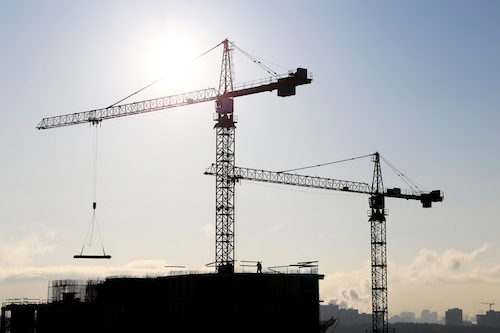
What Is a Fixed Cab Crane?

Fixed-cab cranes have several different types and models, each with its unique benefits and uses. Here is everything you need to know about fixed-cab cranes:
What Is a Fixed-Cab Crane?
A fixed-cab crane is a vehicle used to lift and move heavy items in and out of loading docks, warehouses, or other areas with limited space. These machines are designed with a cab that extends over the top of a trailer or truck bed, allowing the operator to sit at the controls inside the vehicle.
In many cases, these cranes can lift and lower loads up to 40 tons, making them perfect for construction sites, mines, and other heavy-duty applications. They allow for precise lifting, even when the load is on a steep angle or over a long distance. This can drastically reduce time spent at the jobsite and increase productivity, making it a valuable investment for many businesses.
Fixed-Cab Crane Types
Full Overhead
These are the most common types of fixed-cab cranes, with the cab and boom being one unit. Full overhead cranes can lift tall loads vertically, horizontally, and at angles.
Welded Overhead
Welded overhead cranes are similar to full overhead cranes, with one significant difference: the cab and boom are connected by two parallel rotating joints. This setup allows the boom section to swing towards the cab, maximizing the space in the crane’s lift area.
Fixed Overhead
Fixed overhead cranes are some of the largest ones available, with a single unit able to lift loads up to 80 tons or more. The cab and boom are two separate pieces, with one being mounted on the other.
Fixed-Cab Crane Features
When looking at a fixed-cab crane, you’ll want to keep an eye out for the following options and features:
- Lift capacity – The maximum weight the crane can lift. This is typically measured in tons, with 10 tons being the most common and useful lift capacity.
- Hook length – This is the length of the hook that extends from the end of the crane. This is an essential consideration for smaller models, as the length of the hook will determine how large of a load it can lift.
- Hook capacity – How much a given load can safely weigh. This should always be less than the lift capacity; otherwise, the crane could be overworked and break. –
- Power source – How the crane is powered and operated. This may include an electrical system or an internal combustion engine.
Final Word
With a fixed-cab crane, you can lift and move heavy items that would be difficult to transport otherwise. They offer precise control, an expansive reach, and the ability to fit into tight spaces, making them an excellent choice for many different types of operations.
For more efficient use, fixed cab operators must know how to use the crane safely and efficiently, understand how the various crane components function, and be able to operate the crane in all kinds of weather conditions.
West Coast Training can help you develop crane operating skills and give you an edge when looking for jobs or promotions.
Contact us today at (800) 755-5477 to learn more about our training programs.
